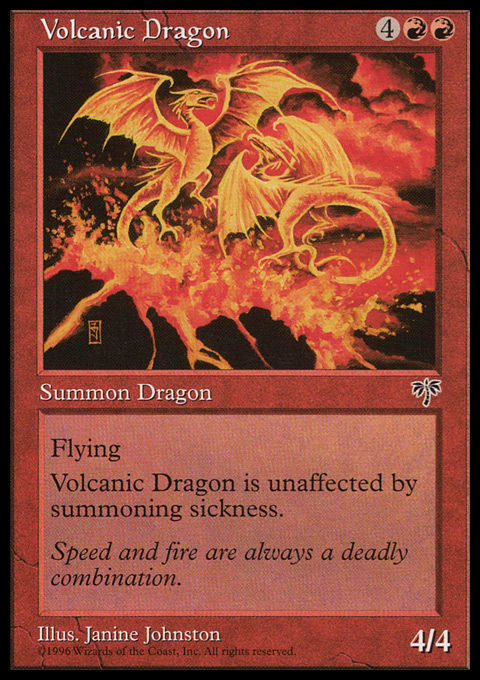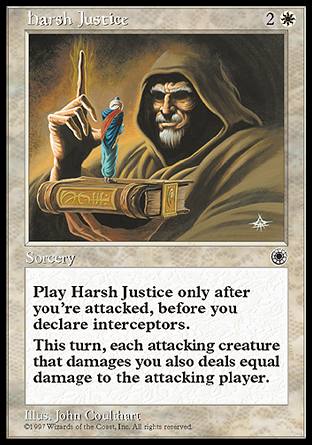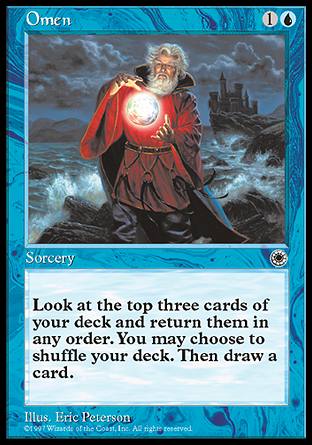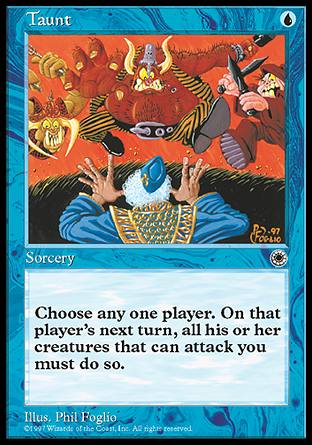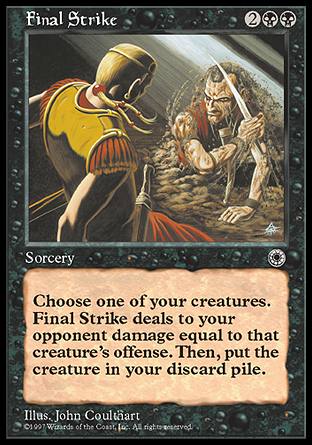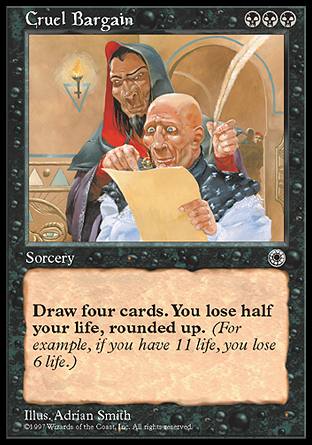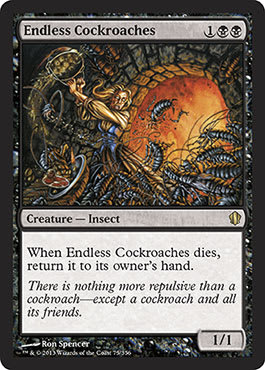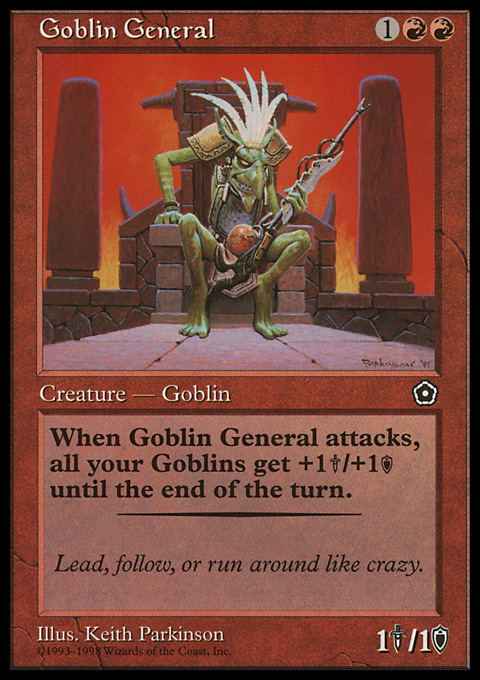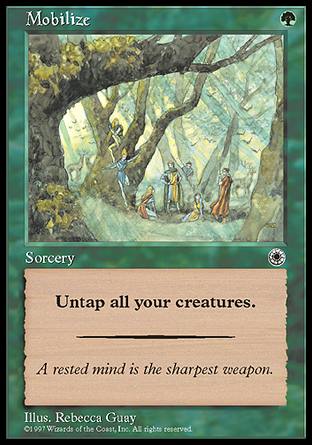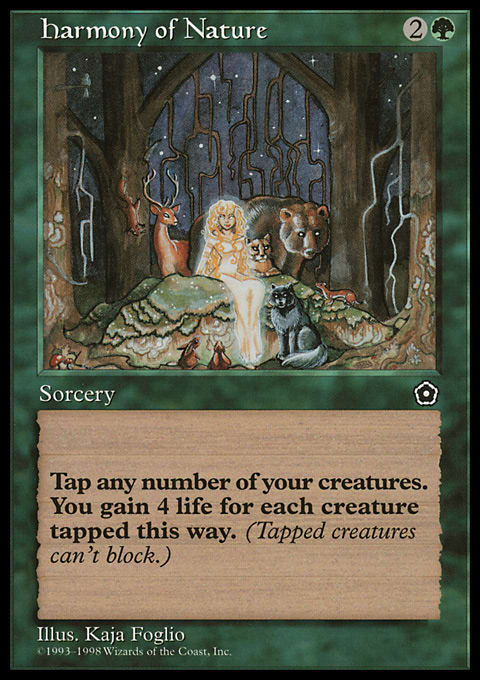Every Magic: the Gathering story has a beginning, but I'm not talking about lore. For all the novels worth of mythology, the tale that matters most is your story. The first few pieces of art that caught your eye, a mechanic or combo that made your brain light up with possibility. Those early crushing defeats. A rush of elation at your first win. These are the early chapters in every player's cardboard chronicle.
For many older players, these chapters were often delivered via Portal and Portal: Second Age. Designed as an entry point for new players, these sets simplified mechanics. Or nixed them entirely. Flying, Landwalk, and Haste made the cut, but classic abilities like Trample and First Strike were deemed too complex. All spells were Sorceries, though some deploy wording that lets you to play them on enemy turns (Ex. Deep Wood). Most of these have since been errata'd into official Instants. Many creatures were entirely vanilla and without creature type. Mere stacks of Power and Toughness indicated by charming sword and shield icons. Admittedly, my nostalgic side misses those. Creatures didn't approach the level of efficiency seen at today's Commander tables. However, removal wasn't the greatest either, so if a card had 'Dragon' in its name, you were still in trouble.
With intentional watering-down of Magic's nuances, one would assume Portal and Portal: Second Age offer little to the discerning eyes of today's Commander player. Path to Exile and Malicious Affliction overshadow Just Fate and Hand of Death by a mile, but that doesn't mean these starter sets aren't worthy of exploration. Their novice nature might mean fewer gems lie within, but it also could mean cards with interesting potential have been overlooked. With the vast libraries of cardboard at our disposal, it's easy for a single card to get left in the dust, especially if it's from a bygone era and appears rudimentary at face value. But digging through the archives occasionally yields hidden treasure. Who knows what obscure tech we might uncover from these entry-level entities?
Before we dive into the cards, I'd be remiss for not pointing out a unique design aesthetic for Portal: Second Age. While the first Portal stuck mainly to classic fantasy tropes - dragons, wizards, etc. - the sequel injected a dash of steampunk into the game well before Kaladesh or the Izzet Guild. Blue's seafaring slant is littered with clanking mechanical construction (Talas Scout, Steam Frigate, Armored Galleon). Knights wield hefty flint-lock muskets alongside sword n' shield (Alaborn Cavalier, Trokair Highguard). The kind of boomsticks Hellboy might lug into battle. Black's signature creature type, the Nightstalkers, were a race of sinewy, impish swamp-dwellers who also had a penchant for firearms (Lurking Nightstalker, Prowling Nightstalker). Portal: Second Age is the only place where this creature type makes an appearance. Yet, at least. Perhaps these devilish creeps will crawl their way into a future set, though I doubt it'll make their main "payoff" (Rise of the Nightstalkers) worth its horrific drawback. Few of these aesthetic choices are reflected in card mechanics (Steam Catapult being the exception), but they're an interesting twist that flavors the world of Portal: Second Age and sets it apart from other sets, especially its predecessor.
The age and scarcity of Portal and Portal: Second Age also make their obvious powerhouses quite valuable. Personal Tutor and Sylvan Tutor are Sorcery-speed versions of Mystical Tutor and Worldly Tutor, but are in much lower supply and thus much pricier. The same can be said for Norwood Priestess, who actually manages to be more efficient than her more well-known counterpart, Elvish Piper. Strong cards, but with price tags high enough that I'd hardly consider them hidden gems.
White
Righteous Fury: Much like Sunblast Angel, Righteous Fury has the potential to act as a one-sided 'Wrath. In practice, both spells are unlikely to entirely sweep the enemy field, but hopefully hit the most dangerous threats. White has ample means tap down opposing armies to make the most of Righteous Fury. Commanders like Derevi, Empyrial Tactician, the duo Rhoda, Geist Avenger & Timin, Youthful Geist, and Inquisitor Greyfax all keep opposing threats vulnerable to the blastwave. Potential for copious lifegain is also not to be overlooked, as generals like Heliod, Sun-Crowned, Karlov of the Ghost Council, Ayli, Eternal Pilgrim, and Lathiel, Bounteous Dawn all reward a sudden increase in HP. In the 99, ample tap-enablers can be found on cards like Authority of the Counsuls, Blind Obedience, and Kismet. Gideon Jura and Taunt force entire teams to attack, ensuring everyone feels the fury. The subsequent life gain oughta help offset any life lost by these attacks. Or you could get really mean and throw down Githzerai Monk at the end of your opponent's turn to transform Righteous Fury into a true Plague Wind with a frosting of life gain.
Harsh Justice: I hate to break it to you, but Harsh Justice won't take an alpha-striking opponent down with you. At first glance, the card appears like a splendid counter attack, able to send an equal degree of combat damage right back at your opponent. But alas, karmic damage won't be dealt to your foe if their attack was enough to kill you first. You'll simply be too dead for the trigger to activate. A bummer, but that doesn't mean Harsh Justice can't still dole out a great degree of pain. Survive an enemy assault, and Harsh Justice turns into a massive burn spell aimed directly at your attacker's face. Not only is this something they certainly won't see coming (White isn't exactly known for its direct damage), but it leaves them more vulnerable to counterattack. Because absorbing the impact of the initial rush is key toward making this spell work, Commanders that provide life gain like Trostani, Selesnya's Voice, Firesong and Sunspeaker, and Oloro, Ageless Ascetic come in handy.
Steam Catapult: It may be clunky, but Steam Catapult is sure to make opponents think twice about attack patterns. The catapult is a slow removal machine, but it's still a removal machine. Getting the most out of it harkens back to some of our examples from Righteous Fury, as we want to tap down creatures whenever possible to ensure the juiciest targets are sideways when our turn rolls around. Untap-effects also help, making Commanders like Samut, Voice of Dissent (which also provides Haste) and Estrid, the Masked (Freed from the Real works wonders, here) very helpful at doubling removal potential. Just note that Steam Catapult can only be activated before declaring attackers, so combat-centric generals like Aurelia, the Warleader untap it, but don't allow for an extra shot.
Blue
Omen: Something to remember about the term "strictly worse": it doesn't mean the less powerful card is bad. With Commander being a singleton format, repeated effects can be more important than raw efficiency. Such is the case with Omen, a slower Anticipate. Or more expensive Ponder. Take your pick. But in either case, if you're running those strictly-better cards in your Commander deck, odds are you'd happily include another copy. The obvious Commanders are Spell-Slingers like Talrand, Sky Summoner, Elesha, Voice of the Infinite, Octavia, Living Thesis, Veyran, Voice of Duality, or Balmor, Battlemage Captain. The rearranging of cards back atop your library also synergizes with Neera, Wild Mage, Hurkyl, Master Wizard, and Yennet, Cryptic Sovereign.
Cloak of Feathers: Much like Omen, this card is a Sorcery-speed version of an Instant (Leap). Due to a cheap casting cost and cantrip effect, Cloak of Feathers fits into many of the Spell-Slinger decks noted above. Granting temporary wings onto a creature also helps get in for damage via Shu Yun, the Silent Tempest, or copy-shenanigans with Ivy, Gleeful Spellthief, Orvar, the All-Form, and Ink-Treader Nephilim.
Yes, I'm aware the Nephilim isn't technically Legendary. But it should be, along with the rest of the oddball cycle. They're all wonderfully strange and deserve Legendary errata one day.
In the meantime, Rule 0 exists for a reason, folks!
Taunt: Ah, the days of Phil Foglio art. If Magic: the Gathering were ever made into a Sunday-paper comic strip, you can best Mr. Foglio would be doing the illustrations.
Anyways, though Portal isn't generally known for efficient design, Taunt's reverse-Disrupt Decorum effect comes in at only single Blue mana. This is very useful for Commanders who actively want opponents to be attacking you. Isperia, Supreme Judge suddenly draws you a boat-load of cards. O-Kagachi, Vengeful Kami is likely to eat an attacker, than blow something up next time he attacks. Clear the way of blockers for Yuriko, the Tiger's Shadow to sneak in her team. Or let Arcades, the Strategist and his wall of Walls smash the forced attackers to pieces. Within the 99', No Mercy, Dissipation Field, Teysa, Scion of Ghosts, and Michiko Konda will all ensure no attacker sticks around after the initial assault.
Black
Final Strike: Black can generate some absurdly-large creatures by using life as a resource. Selenia, Dark Angel quickly turns Death's Shadow and Scourge of the Skyclaves into one-hit killers. But what about leaving oneself open to attack from another player? Simply pick up that Death's Shadow and fling it at their face. Final Strike costs double that of its Red cousin, but it provides Black with an unexpected source of direct damage. If your Commander deck has a Voltron theme via massive general (Jarad, Golgari Lich Lord, Maga, Traitor to Mortals, Thraximundar), a timely Final Strike can nix that sole opponent once the other two are pulverized. Who wouldn't want to fling a Yargle, Glutton of Urborg at another player?
Cruel Bargain: Speaking of paying life for profit, if your Commander deck is already running Infernal Contract, Cruel Bargain provides an identical second copy. Half your life is a steep price, even for 4 cards, but bloodshed can have its upside. Generals who reward you for losing life (Vilis, Broker of Blood, Greven, Predator Captain, Willowdusk, Essence Seer, or who simply want your life total low (Jerren, Corrupted Bishop // Ormendahl, the Corrupter, Bane, Lord of Darkness, Myrkul, Lord of Bones) all turn Cruel Bargain's drawback into an advantage. Or you could simply run a Commander who'll gain you all that life right back (Elenda, the Dusk Rose, K'rrik, Son of Yawgmoth).
Endless Cockroaches: Like an insectile Squee, Goblin Nabob, Endless Cockroaches keeps right on coming back after kissing the dirt. Granted, the bugs need to actually die in order for this to happen, so they can't be use for the sort of Discard-synergies that go with our Goblin friend. But much like Reassembling Skeleton, their persistent nature makes them perfect for an Aristocrats strategy. Ayara, First of Locthwain, Braids, Arisen Nightmare, Yawgmoth, Thran Physician, Korvold, Fae-Cursed King, Teysa, Orzhov Scion, Ayli, Eternal Pilgrim, and countless others are happy squash these creepy crawlies over and over. Alternatively, if you really want to play up the Insect creature type, Commanders Grist, the Hunger Tide, Zask, Skittering Swarmlord, and Blex, Vexing Pest are happy to take Endless Cockaroaches under their exoskeletal wings.
Red
Goblin General: When it comes to creature types that go wide, the number of tribal lords goes long way. Plenty of Commanders can spit out Goblin tokens on their own (Krenko, Mob Boss, Krenko, Tin Street Kingpin, Wart, the Raidmother), but those tokens are still only 1/1's to start with. Fortunately for Goblins, they've an entire lord-lineage that stretches back decades. While classic entries have a nostalgic edge (Goblin King, Goblin Warchief), and more modern ones stress efficiency (Hobgoblin Bandit Lord, Rundvelt Hordemaster), it doesn't mean the stats-boosts Goblin General brings to the table are any less impactful. If your goal is to make as many of the little green guys as possible, you'll likely want to include all the lord-effects you can. Be mindful not to leave Goblin General at home. He may lack the bells and whistles of his counterparts, but stills allow the team to smash for extra damage
Goblin War Strike: While we're on the subject of ample goblins, let's also not forget that Red specializes in Burn. When it comes to Commander, that most often takes the form of Fireball-type finishers fueled by countless Treasure tokens (Crackle with Power, Bonfire of the Damned, etc.). Now imagine if all those Treasure tokens could also attack? Goblin War Strike, given enough army-building, can handily deal those final 10+ points of damage to a player. At a single Red mana, the only real cost is keeping your team alive and growing. Which you were probably planning to do, anyway. Run Commanders that dump a bunch of Goblins onto the table (Muxus, Goblin Grandee, the aforementioned Krenko pair), and Goblin War Strike quickly turns dangerous. It's a late game finisher that keeps mana open to cast other spells that turn. Provided any opponents are left, that is.
Green
Mobilize: Just how Cloak of Feathers had the speedier cousin in Leap, Mobilize runs into the 'strictly better' dilemma when compared to Vitalize. But no matter, for as we noted earlier: If you're looking for this sort of effect, you're probably happy to find a second copy. Even if that copy is at Sorcery speed. Green contains multiple Commanders to benefit from mass-untap. Selvala, Heart of the Wild, Kinnan, Bonder Prodigy, Marwyn, the Nurturer, Seton, Krosan Protector, and Katilda, Dawnheart Prime super-charge their deck's mana-making potential. Katilda also benefits from fellow Portal card Rally the Troops. Merfolk decks led by Kumena, Tyant of Orazca now get multiple activations of whatever ability best suites the situation. Or if you want to go for the kill, activating Lathril, Blade of the Elves twice in one turn will often be enough to axe multiple opponents.
Harmony of Nature: We've come a long way with life gain. Commander now offers ample synergies to make up for the lack of direct board impact (Shanna, Purifying Blade, Beledros Witherbloom, Lathiel, Bounteous Dawn), but that wasn't always the case. Many older life gain cards did just that. They gained life and did nothing else. As such, many have been consigned to the forgotten corners of history, but here's the thing about Harmony of Nature: that's a lot of life per tapped creature. A single Beledros Witherbloom will amass enough Pests in a single turn cycle to net you 20 life off Harmony of Nature. At which point you can start untapping lands with Beledros for extra fun. Amass enough tokens, something White and Green excel at, and Lathiel, Bounteous Dawn hands out Craterhoof Behemoth-sized stats boosts to the team. Willowdusk, Essence Seer will do the same, only for a single (now-colossal) creature. If you're running Black, Vito, Thorn of the Dusk Rose and Sanguine Bond easily take down opponents. Granted, no matter what color you pair with Green, Aetherflux Reservoir is always an option.
Razorclaw Bear: Our final entry is for the Ayula, Queen Among Bears players. Mono-Green only has access to twenty-one other Bears. Of these, 20% actually appear in Portal and Portal: Second Age. All are vanilla, save for two. River Bear Islandwalks, so take that, Blue players. But the card I really wanted to put a spotlight on is Razorclaw Bear, a Hill Giant that gets a stats-boost when blocked.
It costs over $50.00.
Wizards, maybe throw Ayula players a bone and print a few more bear cards? I know Rares from Portal: Second Age are hard to come by, but people are getting desperate here!
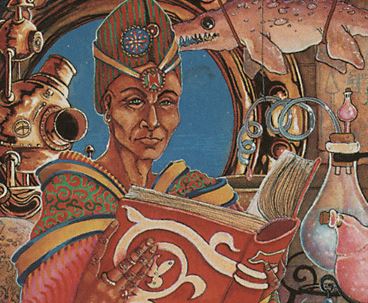
Talas Reseacher by Kaja Foglio
I hope today's dive into Portal and Portal: Second Age inspired new ideas for obscure cards. And an appreciation for how to game has evolved. There's a seemingly endless arcane archive, with more and more new cards filling the shelves by the day. But for all the latest, flashy cardboard, don't forget that hidden gems can still be found in the most unassuming places. Even the realm of the apprentice can teach us new things.
Thanks for reading, and may your research unlock more obscure tech!
-Matt-

















